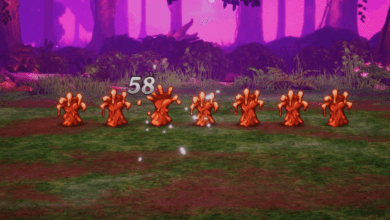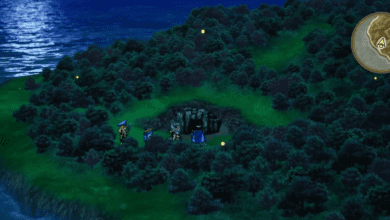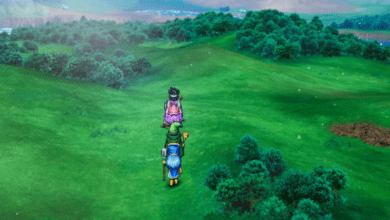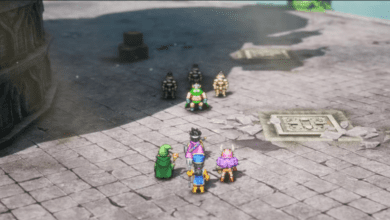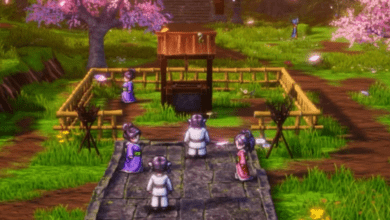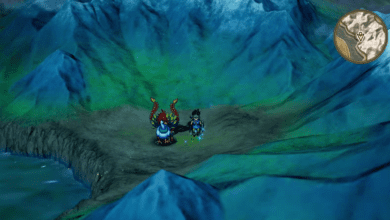Dragon Quest 3 Remake: Difficulty Settings Guide
Key Takeaways
- Three Unique Difficulty Modes: Choose from Dracky Quest (Easy), Dragon Quest (Normal), and Draconian Quest (Hard) to customize your experience.
- Change Difficulty Anytime: You can adjust the difficulty at any point outside of battle without penalty, allowing flexible gameplay.
- Optimized for Every Playstyle: Each difficulty offers a distinct balance of story focus and combat challenge, making it perfect for both newcomers and seasoned players.
The much-anticipated Dragon Quest 3 HD-2D Remake brings a modern touch to a beloved classic with stunning visuals and an immersive 2D-HD design. However, one of the most talked-about features of the remake is its new difficulty settings. This version of the game offers three distinct levels of difficulty each tailored to suit different playstyles and experience levels. Whether you’re a newcomer to the series or a Dragon Quest veteran, there’s an option that will cater to your preferred balance of storytelling and challenge.
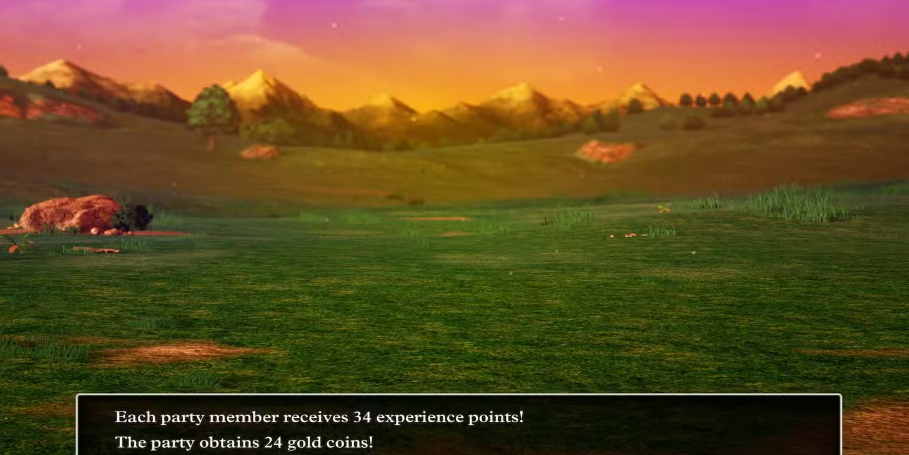
In this guide, we’ll break down each difficulty setting, explain the pros and cons, and help you decide which one might be best for your journey through the world of Dragon Quest 3. Plus, we’ll show you how to change difficulty at any point in the game, giving you maximum flexibility as you explore dungeons, fight monsters, and collect treasure.
Understanding the Difficulty Levels
1. Dracky Quest (Easy Mode)
The Dracky Quest mode is designed for players who want to experience the story with minimal challenge. Here’s what you can expect from this setting:
- No Party Wipeouts: In Dracky Quest, your party can never be wiped out in battle, even if your HP drops to zero. This mode removes the fear of failure, allowing you to focus on the story and exploration without worrying about combat consequences.
- Increased Damage Output: Your party deals more damage to enemies, making battles quicker and easier to win.
- Boss Adjustments: Some bosses won’t regenerate health each turn, making them less resilient and easier to defeat.
Best For: Players who are new to RPGs or Dragon Quest, or anyone who primarily wants to enjoy the story without the stress of challenging combat.
2. Dragon Quest (Normal Mode)
Dragon Quest mode is the standard difficulty level, providing a balanced experience that offers a fair challenge without being overly punishing. Here’s what this mode includes:
- Balanced Damage: Both your party and enemies deal damage based on their stats, with no extra boosts or reductions.
- Default Gold and XP: You’ll earn the regular amount of XP and gold, allowing for steady progression without excessive grinding.
- Boss Mechanics: Some bosses regenerate health each turn, adding a slight challenge, but nothing too overwhelming.
Best For: Players who enjoy a mix of story and gameplay challenge. This is the recommended mode for those who want a balanced Dragon Quest experience without the extremes of either too easy or too hard.
3. Draconian Quest (Hard Mode)
For experienced players or those looking for a real challenge, Draconian Quest mode ups the ante with tougher enemies and stricter resource management. Here’s what to expect:
- Higher Enemy Damage: Enemies hit harder, requiring you to strategize and use your party’s abilities more effectively.
- Reduced Damage for Weaknesses: Even when hitting enemy weaknesses, your party deals less damage, making battles more prolonged and challenging.
- Lower Rewards: You’ll earn less XP and gold from battles, making progression slower and grinding more necessary.
- Stronger Bosses: Bosses in Draconian Quest have increased HP and may regenerate health each turn, turning each boss fight into a true test of endurance and strategy.
Best For: Seasoned Dragon Quest players or anyone looking for a hardcore RPG experience. This mode is designed for those who enjoy optimizing their party’s abilities and carefully planning each encounter.
Changing Difficulty Settings in Dragon Quest 3 HD-2D Remake

One of the standout features of Dragon Quest 3 HD-2D Remake is the ability to change difficulty settings at any time outside of combat. This flexibility means you can experiment with different settings without committing to one level for the entire game.
How to Change Difficulty Settings:
- Open the Main Menu: Start by pausing the game to access the main menu.
- Navigate to Miscellaneous: Scroll down to the “Misc.” option in the menu.
- Go to System Settings: Select “System Settings” (located about third from the bottom).
- Select Difficulty Settings: Here, you’ll find the difficulty options. You can switch between Dracky Quest, Dragon Quest, and Draconian Quest modes.
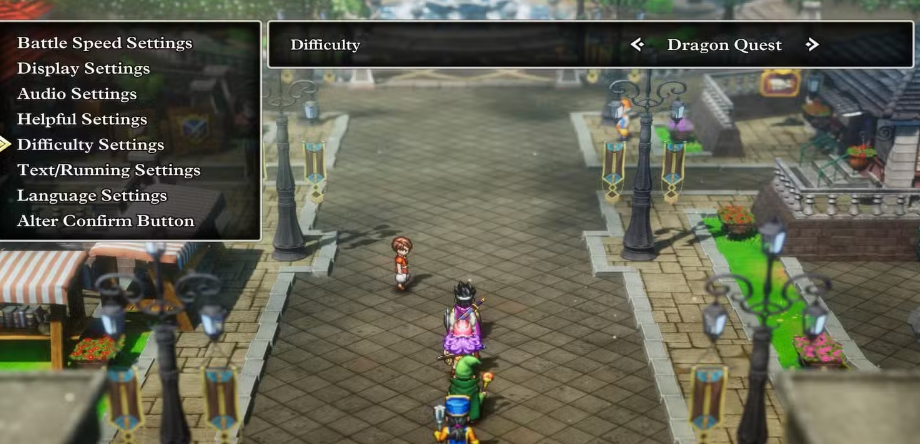
This option is especially useful if you find yourself struggling with a particular boss or if you want to speed up grinding by switching to an easier difficulty for a short time. Since there’s no penalty for changing difficulty, you have complete freedom to tailor the game’s challenge to your preferences at any moment.
Which Difficulty Should You Choose?
Choosing the right difficulty depends on your familiarity with RPGs, your patience for challenging combat, and how you want to experience the story. Here’s a quick recommendation guide:
- For Story-Focused Players: If you’re here mainly for the storyline and prefer to avoid frequent or challenging battles, Dracky Quest is ideal. It allows you to progress through the narrative with ease, focusing more on the characters and plot.
- For Balanced Gameplay: If you enjoy both story and a moderate level of challenge, Dragon Quest mode is the best fit. This standard difficulty offers a balanced experience that gives you a taste of both worlds.
- For Challenge Seekers: If you’re a seasoned RPG player or a die-hard Dragon Quest fan looking for a challenge, Draconian Quest is the way to go. This mode will test your strategic skills and resource management, giving you the most intense version of the game.
Tips for Playing on Different Difficulties
Playing on Dracky Quest

- Enjoy the Story: Focus on exploring the world, talking to NPCs, and experiencing the storyline without worrying about battle strategies.
- Quick Grinding: Use this mode to grind for levels or gold quickly if you plan to switch to a harder mode later.
Playing on Dragon Quest

- Balance is Key: Use a mix of physical attacks, magic, and healing items to stay afloat in battles.
- Learn Boss Patterns: Some bosses may regenerate health, so watch their attack patterns and adapt accordingly.
Playing on Draconian Quest

- Plan Your Party: Carefully consider your party composition and optimize each character’s role. This mode rewards strategic planning.
- Save Often: The difficulty spike means you’re more likely to face setbacks, so save frequently to avoid losing progress.
- Prepare for Grinding: With reduced XP and gold, you’ll need to spend extra time grinding to keep up with enemy strength.
Frequently Asked Questions (FAQs)
1. Can I change difficulty settings during a boss battle?
- No, you can only change difficulty settings outside of combat. If you’re struggling with a boss, exit the dungeon and adjust the difficulty before attempting again.
2. Will changing difficulty affect my rewards?
- Yes, especially on Draconian Quest, where you earn less gold and XP. Lowering the difficulty temporarily can help you grind faster if needed.
3. Is there a penalty for changing the difficulty frequently?
- No, there’s no penalty. Feel free to adjust the difficulty as often as you like to match your comfort level.
4. Which difficulty setting is recommended for newcomers to Dragon Quest?
- Most newcomers will find Dragon Quest (Normal) mode to be a good starting point. It provides a balanced experience that introduces the core mechanics without being too punishing.
5. Does difficulty affect the game’s ending or storyline?
- No, the story and ending remain the same across all difficulty levels. Difficulty only changes the combat experience, so you won’t miss out on any plot points.
The Dragon Quest 3 HD-2D Remake offers a highly flexible gameplay experience with its three distinct difficulty modes. From the easygoing Dracky Quest to the demanding Draconian Quest, there’s a setting for every type of player. With the option to change difficulty at any time, you can fine-tune your experience and find the perfect balance between enjoying the story and relishing in the challenge.
